One Design, Two Products: The SanDisk Ultra 3D (1TB) and WD Blue 3D (1TB) SSD Reviews, with BiCS 3D NAND
by Billy Tallis on September 14, 2017 9:00 AM ESTAnandTech Storage Bench - Light
Our Light storage test has relatively more sequential accesses and lower queue depths than The Destroyer or the Heavy test, and it's by far the shortest test overall. It's based largely on applications that aren't highly dependent on storage performance, so this is a test more of application launch times and file load times. This test can be seen as the sum of all the little delays in daily usage, but with the idle times trimmed to 25ms it takes less than half an hour to run. Details of the Light test can be found here. As with the ATSB Heavy test, this test is run with the drive both freshly erased and empty, and after filling the drive with sequential writes.
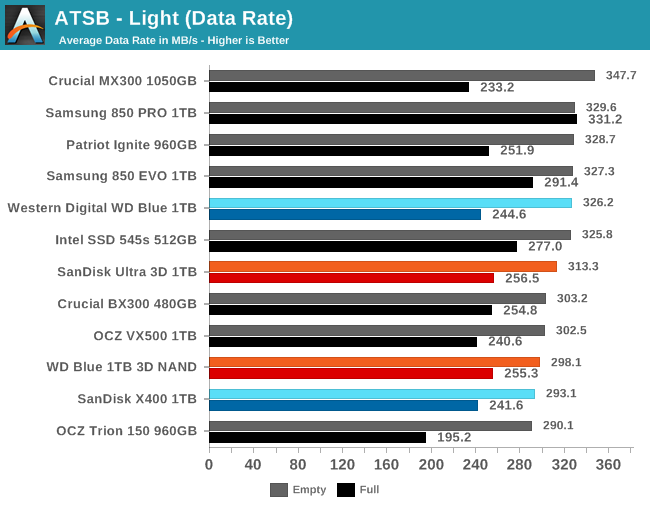
Orange is for the new drives, Blue is for the previous generation models
The new Western Digital 3D NAND SSDs don't show any improvement in average data rate on the Light test when the test is run on an empty drive, but performance when the drive is full is slightly better.
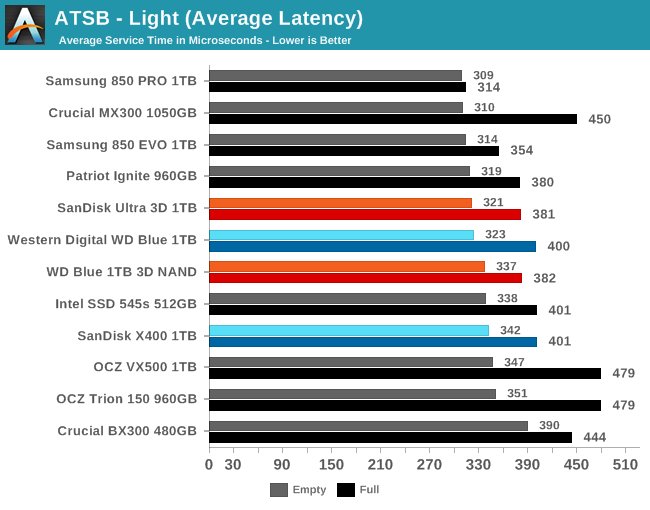
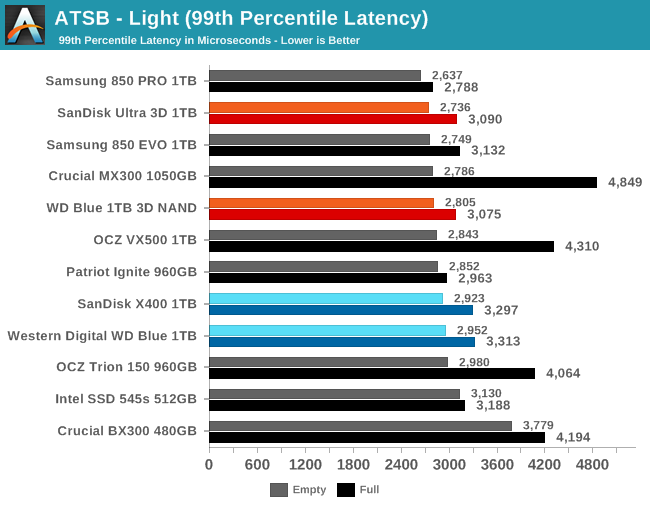
The average and 99th percentile latencies generally show no meaningful change for the new 3D NAND SSDs over their planar TLC predecessors; both new and old generations fall within the normal range of variation for most of their competitors. The full-drive latency scores for the new Western Digital 3D NAND SSDs are slightly improved and the difference between full and empty drive performance is relatively small.
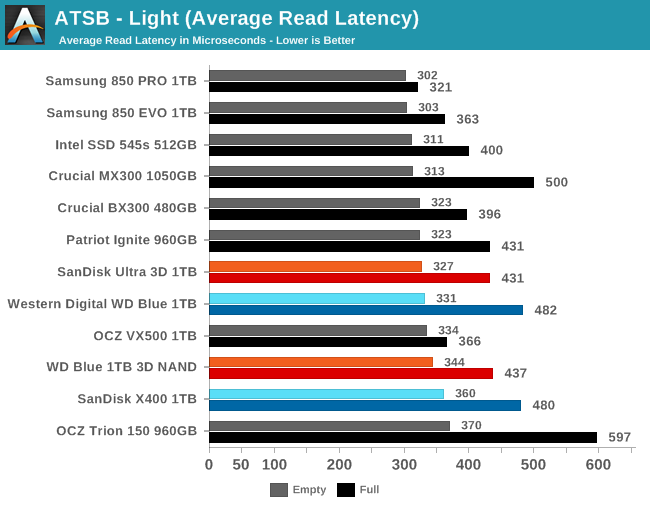
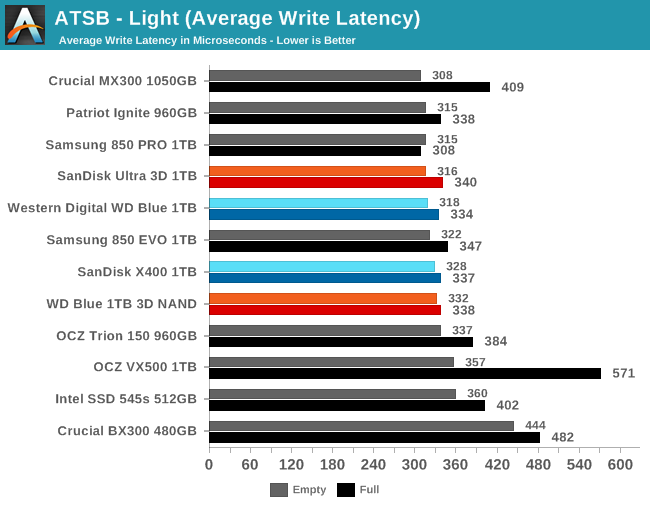
Splitting the average latency by reads and writes doesn't reveal anything interesting about the WD and SanDisk drives, though it does show that the drives with poor full-drive performance differ in how they are affected: the Crucial MX300 has significantly higher read and write latency, while the OCZ VX500 is mostly affected on the write side and the OCZ Trion 150 is mostly affected on the read side.
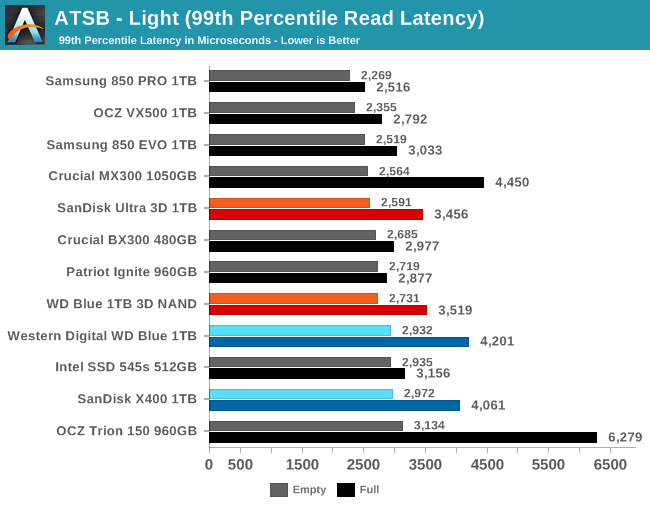
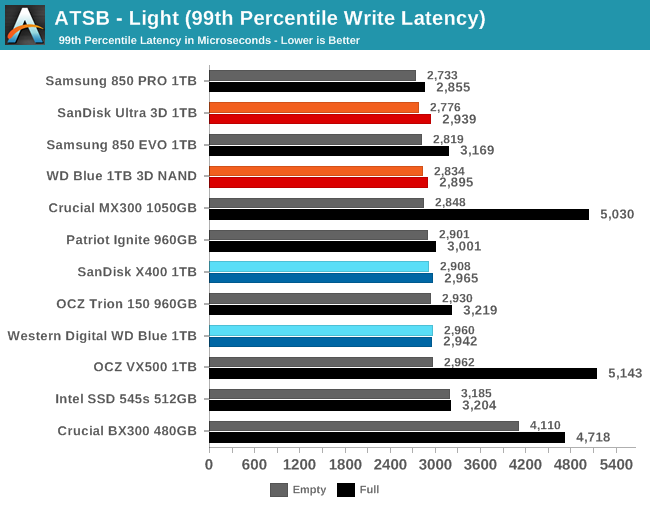
There's a small but clear improvement to 99th percentile read latency for the new WD/SanDisk drives, while the 99th percentile write latencies are quite similar for almost all of the drives in this bunch.
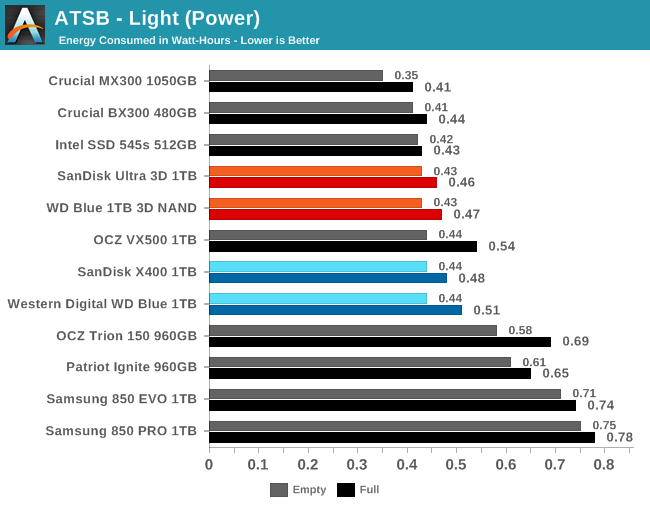
The energy usage differences between most of these SSDs are insignificant; only the Crucial MX300 stands out with clearly lower power consumption than the WD/SanDisk drives. The Samsung and Phison-based drives use more energy than most.










52 Comments
View All Comments
MajGenRelativity - Thursday, September 14, 2017 - link
Looks like a good drive to keep in mind. Congratulations to WD and SanDisk on making a product worthy of challenging the 850 Evo. Good to see the rest of the market FINALLY catching up!nathanddrews - Thursday, September 14, 2017 - link
Knowing that SATA is just about completely tapped at this point, it would just be nice if we could get these drives down to the $0.10/GB range.MajGenRelativity - Thursday, September 14, 2017 - link
Unfortunately, that won't happen while we're in the middle of a NAND shortage/price fixing epidemicDanNeely - Thursday, September 14, 2017 - link
Agreed. I'm hoping that by next year the large scale switch over from planar to 3d nand will be complete and the supply situation will be less squeezed.MajGenRelativity - Thursday, September 14, 2017 - link
Yep. I hope DRAM prices go down tooDanNeely - Thursday, September 14, 2017 - link
Same, although a shortage caused by rising demand is at least a good problem to have after years of the consumer PCs decline dragging the industry down.MajGenRelativity - Thursday, September 14, 2017 - link
That's true, assuming the "shortage" is caused by rising demand. I have no proof either way, so you quite well could be right.melgross - Wednesday, September 20, 2017 - link
Much of it is coming from increasing smartphone and tablet storage. For example, Apple now has either 64GB or 256GB for their phones, and up to 512GB for the Pro tablets. Those are pretty large numbers, and along with some Android models, are sucking a lot of NAND and RAM out of the market.smilingcrow - Thursday, September 14, 2017 - link
The demand is coming from other areas not PCs and that's only half of it.The other is that they have kept supply low so not to get into the same over supply issue that they have had before.
The very low RAM prices were unsustainable due to massive losses but not sure if NAND has ever been sold below cost.
MajGenRelativity - Thursday, September 14, 2017 - link
Ah